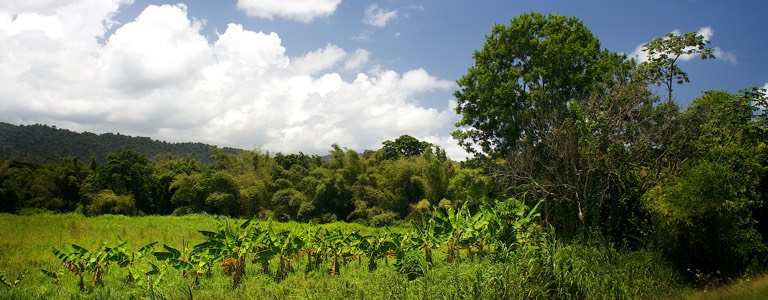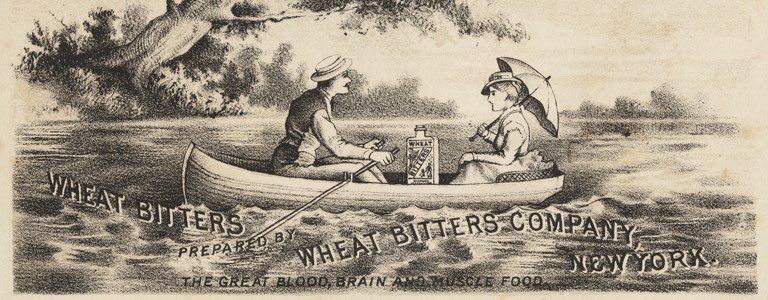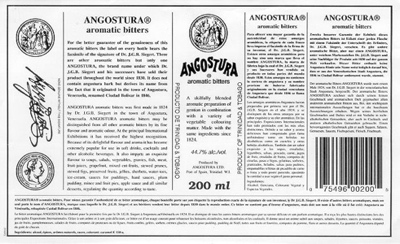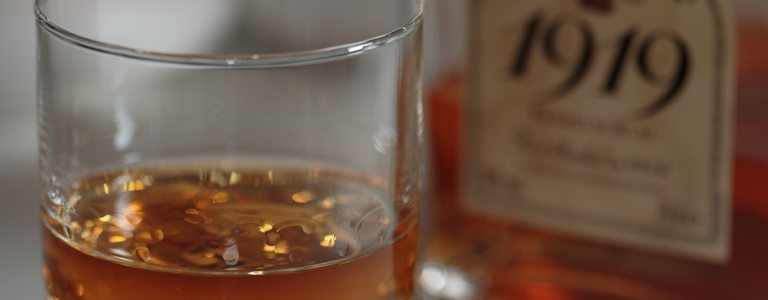Angostura Limited, Trinidad and Tobago
A tropical, rich, and diverse region, the Caribbean Sea is home to hundreds of islands that hold unique cultures, economies, and over 30 million people (UNEP). Of the thirteen sovereign countries and 17 dependent territories in the region, Trinidad and Tobago is a mountainous and forest-rich country that is perhaps one of the most industrialized economies in the Caribbean, with a population of approximately 1.3 million and a strong energy sector (Inter-American Development Bank, 2007).

The country has also relied on its strong agricultural traditions and is a significant producer of alcoholic beverages, which account for over US$40 million in exports annually (Observatory of Economic Complexity, 2012). Following settlement by the Europeans, Trinidad and Tobago began a centuries old tradition of distilling rum, an alcoholic beverage made from molasses, the byproduct of sugar cane cultivation. Angostura Limited (Angostura) is one company that has made a difference in the Trinidad and Tobago economy by utilizing a robust intellectual property (IP) portfolio of trade secrets, trademarks, and domain names.
Goods with specific geographical origin
Angostura Bitters – the product that made the company famous – is made with ingredients that are native to Trinidad and Tobago. In the case of the company’s Orange Bitters, the product is made with oranges that are grown and selected by hand in Trinidad and Tobago (according to the company). As the company expanded, however, it increased its production into rum products, which is made from sugar cane and is a crop that has a long history in the Caribbean.
Sugar cane (saccharin officinarum) makes up for approximately 80 percent of the world’s sugar (FairTrade International, 2013) and is thought to have been domesticated in Southeast Asia as far back as 10,000 years ago (National Geographic, 2013). When colonial settlers first arrived on the twin islands, they found a tropical climate tempered by trade winds, with an average range of 22 – 31 degrees Celsius (°C). Combined with average yearly rainfall of approximately 1,600 millimeters (The Commonwealth) and a distinct rainy and dry season (Trinidad & Tobago Tourism Development Company Ltd.), the islands of Trinidad and Tobago make for the ideal climate for sugar cane to flourish (Food and Agricultural Organization (FAO), 2013).
With a long history of local sugar cane cultivation and locally sourced ingredients for their bitters products, Angostura has been able to leverage the local environment to create products with international appeal.
Research and development
Angostura produces many products, but perhaps the most recognizable is the company’s bitters, which are made of water, herbs, spices, and botanically infused alcohol. While today they are used in small portions to flavor various alcoholic and non-alcoholic drinks, hundreds of years ago they were prized primarily for their health benefits (Weston A. Price Foundation, 2011).
It is thought that sometime in the 1700s physicians developed medicinal tonics comprised of herbs and spices and preserved in alcohol, which gave them their bitter taste (Serious Eats, 2011). These potent concoctions eventually made their way from the doctor’s office to being used in alcoholic drinks, although it is not clear how this occurred or who was the first person to make this change (Smithsonian, 2012).

Angostura is one of the oldest bitters, which was first produced by Dr. Johann Siegert in the early 1800s as a stimulant for troops (Smithsonian, 2012). As a testament to its quality and popularity, it is one of only two bitters products to be continually produced since the 1800s (Serious Eats, 2011). Over the following years Dr. Siegert continued his research and development (R&D) and perfected the formula for his aromatic bitters in 1824 – which he called Amargo Aromatico – and continued to use them in his medical practice (according to the company). Hailing from the town of Angostura in Venezuela (which is known today as Ciudad Bolivar), the physician turned entrepreneur named his product Angostura Bitters (according to the company). After moving to the island of Trinidad in the Caribbean – today part of the country of Trinidad and Tobago – Dr. Seigert’s sons launched a company, opened a factory in the capital of Port of Spain, and started selling his product internationally (PR Newswire, 2014).
The formula has not changed since it was perfected in 1824 and continues to be the base for Angostura Bitters (according to the company). As the company grew, it took advantage of the rich traditional knowledge of rum distillation in Trinidad & Tobago, enhancing its R&D into new products. The Seigert family continued rum blending into the early 1900s, and with the addition of a qualified chemist in 1936, a sugar technologist in 1942, and an industrial chemist in 1944, Angostura was able to perfect its R&D into the distillation of rum and production of rum products (according to the company).
Traditional knowledge
Speaking to the Government of Trinidad and Tobago, Industry and Investment Minister Vasant Bharath said “Trinidad and Tobago’s culture and history is entwined with the history of rum, dating back to the days of our sugar cane plantations” (Government of Trinidad and Tobago, 2013). Distilled from molasses, the amount of sugar cane cultivation in the country made Trinidad and Tobago an ideal location for rum production (Library of Congress of the USA). First introduced in the late 1700s, by the late nineteenth century the island of Tobago was one of the top sugar producers in the region and Trinidadian workers enjoyed wages that surpassed many of their Caribbean counterparts (Library of Congress of the USA).
With the discovery of oil in the country, sugar gradually decreased as the main source of Trinidad and Tobago’s economy (Sugar Heritage Village, Ministry of Tourism, Trinidad and Tobago), but those involved in sugar cane cultivation kept the traditional knowledge they learned, which included rum distillation, a significant part of sugar cane plantation activity throughout the crop’s cultivation history in Caribbean islands such as Trinidad and Tobago (A Bottle of Rum: A History of the New World in Ten Cocktails, 2007).
Like rum, the making and recipe of Angostura’s bitters has a centuries long tradition that, according to the company, has been unchanged since its inception in 1824. The company uses this traditional knowledge and makes their bitters by infusing herbs, seeds, bark, fruit, peels, or roots in alcohol and then extracting their essence (A Bottle of Run: A History of the New World in Ten Cocktails, 2007). Ingredients are first mixed according to a proprietary formula and then crushed, filtered, and infused in vats of 97% alcohol (Alcademics, 2011) before the finished product is bottled and prepared for export to over one hundred countries (A Bottle of Run: A History of the New World in Ten Cocktails, 2007). Combining its traditional knowledge of rum distillation and the production of bitters, Angostura has been able to develop and maintain an old yet successful IP portfolio.
Branding

(Photo: Flickr/Dominic Lockyer)
Riding a long and rich history, Angostura has developed its brands as those that are linked with products bringing the spirit of Trinidad and Tobago to its customers (according to the company). Because of the longevity of the Angostura Bitters brand, it has been able to secure up to 90 percent of the Trinidad and Tobago market and has earned worldwide recognition (Caribbean Beat, Issue 57). A unique property of the company’s bitters is that while it contains 44.7 percent alcohol by volume, it is only used in very small amounts which means the alcohol concentration is so low that it can be considered to be non-alcoholic (according to the company). Because of this, Angostura Bitters are also marketed as a brand not just for cocktails but also as an essential ingredient to enhance flavors of juice, ice cream, and marinades (Caribbean Beat, Issue 57).
Perhaps the most unique aspect of Angostura Bitters is the oversized label that the bottle is packaged in. Although there is no shortage of stories as to why the label is oversized, representatives of the company explained that it comes from the bottle and the label being designed separately. One of Dr. Siegert’s sons designed the bottle while the other designed the label, and neither consulted one another, which resulted in an oversized label (Story of Angostura Bitters Label, YouTube, 2011). It has since become an integral part of the company’s brand.
The success of Angostura’s first product so many years ago allowed the company to enter rum distillation, of which it continues to be a major player in niche rum markets (Government of Trinidad and Tobago, 2014). In 2010, the company entered into a rebranding initiative of its five major rum brands as a way to reach out to new consumers and markets (Angostura, 2010). To celebrate the company’s 190th anniversary, it launched a new brand – Amaro di Angostura – in 2014, which is a unique blend of the company’s bitters and rum and draws upon its oversized label for packaging inspiration (PR Newswire, 2014). Through these efforts, Angostura has been able to remain a major player at home, one of the most recognized international companies producing bitters, and a niche rum producer abroad.
Trade secrets, trademarks, and domain names
With its main IP being nearly two hundred years old, Angostura has found that the best way to protect its product is through using trade secrets (Government of Trinidad and Tobago, 2014). To that end, the company closely guards a secret that has been the mainstay of its success, ensuring that it does not make its way into the hands of competitors. For example, as few as five company directors are allowed to enter the room where the ingredients that make up Angostura Bitters are mixed (A Bottle of Run: A History of the New World in Ten Cocktails, 2007). Taking such measures has allowed the recipe to remain a secret since 1824 (according to the company) and help keep the company competitive.

Another important way in which Angostura protects its IP is through trademarks. Domestically, the company has made over 40 trademark applications with the Intellectual Property Office of Trinidad and Tobago as far back as the late 1800s, including for the Angostura name (registered in 1910), Angostura Aromatic Bitters (registered in 1951), Angostura Orange Bitters, and rum products such as Angostura Single Barrel (registered in 2013). Internationally, the company also has made trademark applications in markets such as for its corporate name in Mexico (registered in 1996) and the Republic of Korea (registered in 2013), over 10 in the United States of America such as for the Angostura name (registered in 1907), 11 in Europe such as the label for Angostura Aromatic Bitters (registered in 2007), and 13 in Australia, such as Angostura 1824 (registered in 2005).
In order to connect with its customers and achieve a wider audience, Angostura also uses domain names and digital media (Government of Trinidad and Tobago, 2014). As of 2014, the company owned angostura.com and angosturabitters.com, through which it provides more detail about its products, corporate history, and goals. Combining trade secrets, trademarks, and domain names, Angostura has been able to protect its IP and grow from a company that only made a single product into one the Caribbean’s leading rum producers (Government of Trinidad and Tobago, 2014).
Commercialization
Once Angostura Bitters made its way into the market in 1875 it quickly became popular domestically and internationally. In the early 1900s Angostura started distilling and commercializing rum products, which picked up greatly in 1945 with the procurement of a new distillery (according to the company).
Up until the early 1960s the company primarily sold Angostura Bitters and various other rum products, such as its Siegert Bouquet Rum, the former becoming popular worldwide and the latter becoming one of the most popular in Trinidad and Tobago (PR Newswire, 2014). When it acquired another major distillery in Trinidad and Tobago in 1973, Angostura diversified further into commercializing more rum products on a larger scale and by 2014 the company’s products were sold in 164 markets throughout the world (according to the company).

Business results
As of 2014, the company was a winner of over 60 international awards (such as the Gold, Silver, and Most Outstanding awards in the International Wines and Spirits Competition, according to the Government of Trinidad and Tobago) and is one of the most well known brands in the bitters market (PR Newswire, 2014). In the first six months of 2011, total rum and bitters exports from Trinidad and Tobago was US$33 million, of which the bulk of was made up of Angostura products (Government of Trinidad and Tobago, 2013). Although the company experienced an historic loss of over US$1billion in 2007, its new branding strategies have allowed it to rebound and extend its market reach (Trinidad Express, 2010). By 2014 Angostura experienced significant growth among all brands, with revenue reaching US$82.1 million in the first half of the year, an increase of 14.8 percent over the previous year (Trinidad and Tobago Stock Exchange, 2014).
Protecting a centuries old tradition
Although the world has changed a lot since Dr. Seigert first developed his bitters recipe, it is this very recipe that has not changed for nearly two hundred years. Closely guarding it as a trade secret and developing other IP assets and strong brand names, Angostura has been able to remain a strong player in an increasingly competitive market. If the recipe can continue to be protected through the strategic use of IP, it could continue to help Angostura, and the Trinidad and Tobago economy, prosper for years to come.
Source: WIPO

 Client Focus
Client Focus